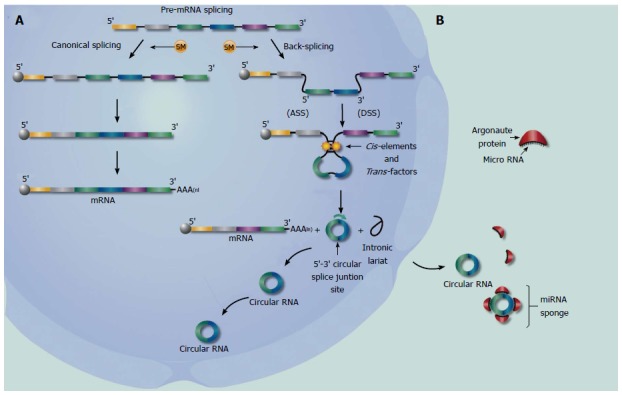Figure 1.

Biogenesis and function of circular RNAs. A: In the nucleus, a single pre-mRNA transcript can produce a linear mRNA and a circular isoform[32]. These two steps, canonical splicing and back-splicing are catalyzed by canonical spliceosomal machinery (Yellow circle, “SM”). In order to create a linear RNA transcript with polarity 5’ to 3’, the eukaryotic cell uses spliceosomal machinery SM together with other biochemical process (5’ capping and 3’ polyadenylation)[10]. Following, circular RNA is produced from a downstream 5’-DSS joined reversely to an upstream 3’-ASS, resulting in a covalently closed circRNA transcript with a 3’, 5’-phosphodiester bond at the junction site (Figure 1)[16,22,26,33,34] and it seems to be modulated by cis-regulatory elements and trans-acting factors[10,16,19,20,26,32]. The final products of these processes are a linear mRNA, a circRNA, and an intron lariat; B: Endogenous circRNAs that are efficiently transported to the cytosol either undergo nuclear export or are released to the cytoplasm during mitosis, where are they are extraordinarily stable[12,16,23,30]. In the cytoplasm circRNAs form a class of post-transcriptional regulators, acting as highly stable epigenetic miRNA sponges competing with the endogenous RNA network (sequestering miRNAs from binding mRNA targets), directly affecting the expression of any related gene[17,18,46].
